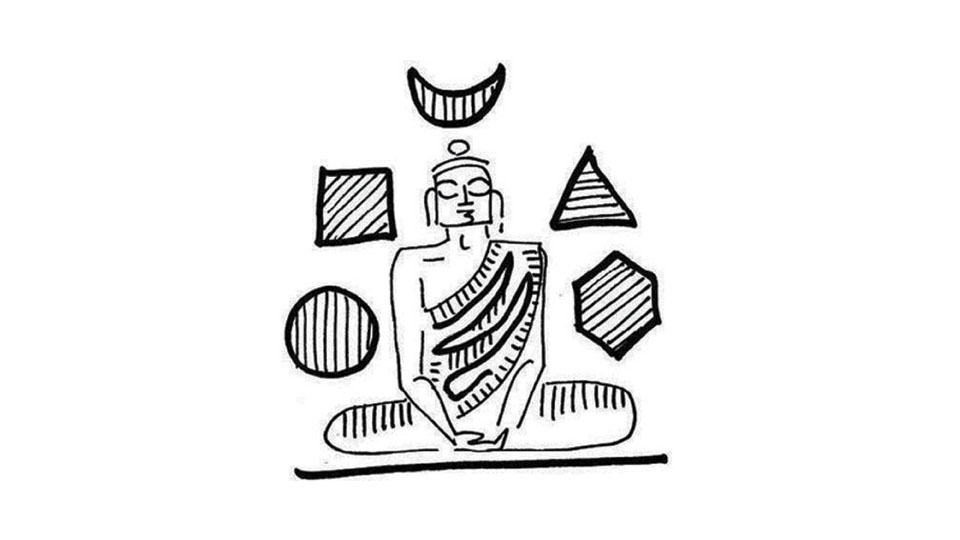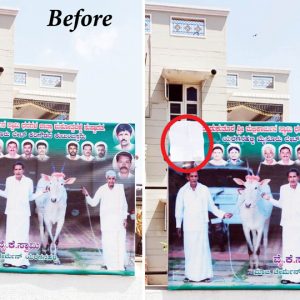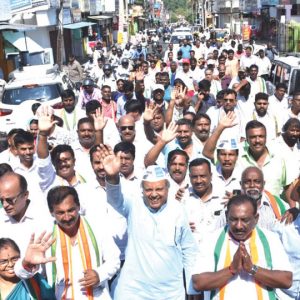By Dr. Devdutt Pattanaik – Author, Speaker, Illustrator, Mythologist
Vedic Rishis are imagined with long hair, tied in a topknot. But Adi Shankara, the Vedanta philosopher, is depicted in popular artworks with a shaved head, covered with a drape. An enquiry into how the Hindu sage and monk treated his hair reveals how it has been used to express materialism and fertility in India since ancient times.
The earliest monk to be depicted in artwork was Gautama Buddha. He lived 2,500 years ago but his images appear only 2,000 years ago, under Greek influence, in Gandhara regions of Northwest India. He is shown with curly hair bunched into a topknot. But this visualisation goes against biographical information that states that when the prince of Kapilavastu renounced his royal life, he cut his hair and wandered with a shaved head. A hunter saw the prince in this state and decided to not hunt that day as a man with a shaven head was deemed inauspicious. This may explain why the earliest artworks do not show the Buddha’s person but represent him symbolically as a tree, footwear, and crown. When he was eventually visualised, he was shown with a topknot. But the bun was described as a cranial bump (ushnisha), indicator of his Buddhahood, a state of heightened awareness. In later Thai art, this bump becomes a flame. In other words, care was taken to point out Buddha was not another Vedic sage with a topknot.
Monks with shaved heads found in Buddhist artworks are identified as Ajivikas, who wandered naked and sought to fast unto death. Jain monks preferred plucking hair from the roots, a painful act aimed at forewarning the aspirant of the pain a life of renunciation entails.
A lot was said about the hair of the Gods in Puranic lore and temple art. Shiva’s matted hair had the power to capture the river Ganga as she descended from the heavens. Ram asks for juice of the banyan tree in the Ramayana to mat his hair before leaving for forest exile. Krishna has curly hair while Balarama has long smooth hair. The Goddess is imagined as having long thick hair: dishevelled when she is Kali, the wild one; combed, oiled, and tied with a string of flowers when she is Gauri, the domesticated one.
In Dharma-shastra, which lists the rites of passage for the dvija, or twice-born Hindu elite, there is mention of the chuda-karma, or mundan, where a child’s head is shaved; all hair is removed except a tuft on the crown. The same was done at funerals, all hair except a tuft on the crown. This ensured there was not a complete break from the material world and household life. The widow, however, was deprived of all her hair and her shaved head hidden by a cloth, indicating her exclusion from the realm of fertility and auspiciousness.
Householder or ascetic
Those who recited the Vedic hymns, and performed Vedic rituals, were expected to sport a tuft of hair on the crown of the head. This was the shikha. It would be tied as a knot. Untying it, as Chanakya does, was a sign of losing control, being angry. Draupadi does the same with her hair. The crest-knot distinguished the Brahmin (half-shaved head) from householder (well combed and oiled hair) from wild forest ascetic (matted hair) and monk (shaved head).
In South India, we hear of two types of Vedic ritualists. Those who tied the tuft of hair in front towards the forehead (mun kudumi or purva shikha). They were identified with the earliest Brahmin migrants to South India, including the Namboodiris of Kerala and the temple priests of Chidambaram temple in Tamil Nadu. Later migrants sported the more common tuft of hair that hangs behind (pin kudumi). Adi Shankara belonged to earlier group, but chose to be a monk.
Adi Shankara is dated by historians to the 8th century. However, his legends come from hagiographies composed at least five centuries later. They describe him as having Tantrik occult powers as well as refined knowledge of Vedanta. Not only did he defeat many Buddhist monks in debate, he also challenged Vedic ritualists. He is also said to have the power to animate corpses. In other words, he challenged men with shaved heads or half-shaved heads and performed deeds of those who sported matted hair. He himself shaved his head. We know this from his legends, where the sight of his shaved head irritates the Vedic ritualist, Mandana Mishra, who Adi Shankara had challenged to a debate.
The formless divine
From the 6th century onwards, historians have noticed a proliferation of Shaiva monastic orders (matha) in South India. Unlike earlier teachers such as Pashupatas, who were wandering hermits and had matted hair, these were milder philosophers, attached to temples. However, structurally, these were very similar to older atheist Buddhist and Jaina orders. Not surprisingly, in later times, Adi Shankara’s radical insistence on the formless divine and his shaven head, led to accusations that he was a Prachanna Buddha (crypto-Buddhist). Be that as it may, the only way Shankara could have sat before Mandana Mishra during a debate, without disrespecting his opponent’s sensibilities, would be by covering his ‘inauspicious’ shaven head with a cloth. And this may be how the standard practice of Hindu monks covering their shaven head may have begun.








Recent Comments